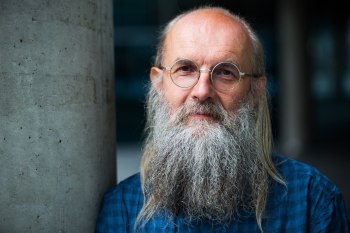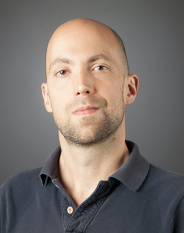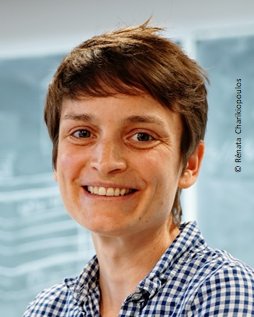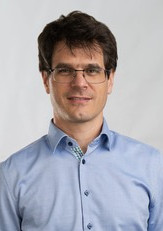Invited speakers
Karel Oliva (Prague, Czech Republic): Roots of the Tension Between Standard And Vernacular Czech: A Short (and Possibly Surprizing) History of Czech Diglossia

Aiming at the goal of providing the audience with a complete rest from computational linguistics, this talk will concentrate on explanation of the source of the differences between Czech standard and Czech vernacular languages. Such differences are present in the communication of any cultural nation, however, the abyss between the two varieties in Czech is rather untypical, as it comprises not only pronunciation and possibly vocabulary, but – in a systematic manner – also differences in at least sound construction of words and grammar, in particular morphology.
In order to do so, we shall concentrate on the history of the Czech language (with the history of the Lands of the Czech Crown as its background) which led to the abovementioned divergence between standard and vernacular language. In particular, we shall take into consideration the time span – roughly – between publishing the Bible of Kralice (“Bible kralická”) and the national revival (“národní obrození”). In particular, we shall shed light on the so-called “darkness period” (“doba temna”), showing it to be a period when the Czech language as well as the Czech nation suffered no serious language or national oppression, eradicating thus some of the deep-rooted, but completely ahistorical, ideological schemata (e.g., about “evil Jesuits” and “germanization of the Czech nation”), and – most importantly - setting the prerequisites for pointing out the true sources of problems of the Czech language of the time, resulting in today’s Czech diglossia.
The talk will be given in English, however, as certain historical sources will have to be quoted in original, some command of the Czech language might be useful for detailed understanding.
Karel Oliva is a Czech linguist, director emeritus of the Institute of the Czech Language of the Academy of Sciences. His professional career focussed on formal and mathematical linguistics, including applications (i.a. he led the research team and co-authored the Czech Grammar Corrector for MSOffice). After finishing his activities at the Institute he has concentrated on communication of science, mainly, obviously, linguistics, but also mathematics, to the general public – he prepared and performed 400 radio broadcasts on etymology of Czech words (“Slovo nad zlato” series), more than 150 videoclips (“Uzlíky na jazyku”) on the same topic on a commercial internet TV, and currently his last publication is an ample book-interview on all aspects of Czech language (“O češtině s Karlem Olivou”).
Travis Gagie (Dalhousie University, Halifax, Nova Scotia, Canada): Flexible grammar-based indexes

For highly repetitive texts such as pangenomic databases, indexes based on grammars (or Lempel-Ziv parses, string attractors, etc.) are usually significantly smaller than indexes based on the Burrows-Wheeler Transform. Nevertheless, they are not widely used in practice, probably because fast implementations are complicated and support only exact pattern matching. In this talk we will review theoretical and practical advances in the past ten years towards computing matching statistics, MEMs, k-MEMs and MUMs, for example, quickly with grammar-based indexes. We will close with a survey of some future advantages of challenges of using grammar-based indexes for pangenomics.
Travis Gagie is associate professor of algorithms and bioinformatics at Dalhousie University, Canada. He earned a master's in computer science with Faith Ellen at the University of Toronto and a doctorate in genome informatics from Bielefeld University with Ferdinando Cicalese and Jens Stoye. Between those degrees he worked with Giovanni Manzini at CNR and the University of Eastern Piedmont; after graduating he post-doc'd with Gonzalo Navarro at the University of Chile and with Veli Mäkinen at the University of Helsinki. He worked as an associate professor at Diego Portales University, Chile, before moving back to Canada. He has about 150 publications and coauthors, and is always happy to add more of either.
Carola Doerr (Sorbonne University, Paris, France): Benchmarking Iterative Optimization Heuristics with IOHprofiler

Iterative optimization heuristics (IOHs) such as local search algorithms, evolutionary and genetic algorithms, or surrogate-based optimization algorithms form an important class of algorithms, designed to find high-quality solutions for challenging optimization problems in an query-based fashion. IOHs alternate between generating solutions, evaluating the quality of these candidates, and using this information to adjust the strategy by which the next solution candidates are generated. Many different IOHs exist, posing a meta-optimization challenge of selecting the most appropriate algorithm for a given problem at hand. One of the key ambitions of our research domain is hence to understand which algorithms work well for which types of problems. A central approach for generating insight into the performance and the behavior of IOHs is benchmarking, i.e., the empirical comparison of algorithms on well-chosen sets of instances, collected to help us understand strengths and weaknesses of different algorithms.
In this presentation, I will give a brief introduction to IOHprofiler, our software environment built to support users in benchmarking activities.
IOHprofiler is designed as a modular tool, covering all central parts of the entire benchmarking pipeline. For example, the IOHexperimenter module provides easy access to common problem sets (e.g. BBOB functions, CEC competitions, GECCO submodular and star discrepancy competitions, etc.) and can be easily combined with other collections of optimization problems. The resulting logs as well as logs from other platforms (such as COCO and Nevergrad) are fully interoperable with IOHanalyzer, the module designed for interactive performance analysis. A GUI, hosted at https://iohanalyzer.liacs.nl/ makes these analysis tools easy to access. Data from many repositories (e.g. COCO, Nevergrad) are pre-processed, such that the effort required to compare performance to existing algorithms is greatly reduced.
IOHprofiler is available at https://iohprofiler.github.io/
Besides applications in research contexts, we will also discuss how to use IOHprofiler for teaching as well as for industrial collaborations.
Carola Doerr, formerly Winzen, is a permanent CNRS research director at Sorbonne Université in Paris, France. Carola's main research activities are in the analysis of black-box optimization algorithms, both by mathematical and by empirical means. Carola is associate editor of IEEE Transactions on Evolutionary Computation, ACM Transactions on Evolutionary Learning and Optimization (TELO) and board member of the Evolutionary Computation journal. She is/was program chair for the GECH track at GECCO 2024 and 2023, for PPSN 2020, FOGA 2019 and for the theory tracks of GECCO 2015 and 2017. She has organized Dagstuhl seminars and Lorentz Center workshops. Her works have received several awards, among them the CNRS bronze medal, the Otto Hahn Medal of the Max Planck Society, best paper awards at EvoApplications, CEC, and GECCO.
David Orellana-Martín (University of Seville, Spain): Parallel virus machines

In the area of Natural Computing, different computing paradigms have arised to create alternative methods to solve problems. In 2015, virus machines were introduced as a model of computation inspired by the way viruses spread between hosts and replicate their genetic code by "tricking" the host entities. A basic virus machine can be depicted as a heterogeneous network consisting of three graphs that represent: (a) the hosts and the channels through which viruses pass, (b) the instructions and the edges that indicate the flow of a computation, and (c) the connections between an instruction and a channel. This model has been demonstrated to be Turing complete, and different applications have been found. However, the sequential model is not powerful enough if we want to solve computationally hard problems. For this purpose, we will see some approaches on the parallelism modes we can introduce and the conflicts that can appear in these new parallel models.
David Orellana-Martín is an Assistant Professor of the University of Seville. He received his B.Sc. in 2014, his M.Sc. in 2016 and his PhD in 2019 at the University of Seville. He received the best PhD thesis of 2019 Award from the International Membrane Computing Society. He was an ERCIM fellow at NTNU (Norway) from 2019 to 2021, and a postdoctoral fellow at the University of Seville from 2021 to 2023. His main research interests are Computational Complexity Theory, Unconventional Computing (specially Membrane Computing and Virus Machines), as well as Machine Learning and High Performance Computing. He is member of the Website Committee of the International Membrane Computing Society.
Primož Šparl (University of Ljubljana and University of Primorska, Slovenia): When theoretical results and computer power join forces

In graph theory we are often interested in a given property (such as being distance-regular or vertex-transitive) and we want to classify all members of a certain class of graphs that have this property. Usually, the class of graphs under consideration is infinite, and so one cannot simply use a computer to run through all the examples and test for the given property. Instead, one usually first studies small examples in the class, makes conjectures and then tries to prove them. One of the first problems that can occur while trying to follow this strategy is that the number of small members of the class that a computer can handle brute force is too small to allow for good conjectures. In such cases one tries to obtain theoretical results that either considerably reduce the search space within the class of studied graphs or makes the search over members of the class considerably faster. The next problem we often encounter is that one either finds no small examples and then conjectures that there are no other examples in the studied class, or finds that (at least for small orders) all examples seem to be of a certain kind. How do we then prove that this is indeed the case?
In this talk we will consider at least two examples of such situations. In the first one we will see that brute force search is so hopeless that there is no way one can make any reasonable conjectures. We will then show a nice theoretical argument that drastically reduces the search space in a very efficient way. In the second example we will see that a brute force computer search seems to indicate that there are no examples with the studied property within the given class of graphs. We will then indicate how to combine the forces of a computer search and known theoretical results to show that this is indeed the case.
Primož Šparl is an associate professor at the Faculty of education, University of Ljubljana, where he is currently the head of the Department of Mathematics and Computer science. He obtained his PhD of Mathematics at the University of Ljubljana in 2007 and was a visiting researcher at the Comenius University, Bratislava, in Autumn of 2016. Most of his research is in graph theory where his main interest is studying graph symmetries and other kinds of regularity in graphs.
Kolja Knauer (Universitat de Barcelona, Spain): Some problems in Cayley graphs and computational approaches

This talk is about Cayley graphs of semigroups, monoids, and groups. The main type of question is which type of graphs arise as (underlying simple) graphs of Cayley graphs. We will present several results and open questions regarding classes of Cayley graph of monoids and discuss how to use combinatorial properties in order to verifiy computationally if a graph is a Cayley graph. If time permits we will additionally talk about chromatic number of Cayley graphs of groups.
Kolja Knauer did his PhD in Berlin, then after a few postdocs got a Maitre de Conference Position in Marseile, and currently is on leave for a research position at Universitat de Barcelona. His research lies between Metric, Algebraic, and Structural Graph Theory, where some special classes of his interest are Partial Cubes, Cayley graphs of groups, monoids, and semigroups, and classes defined by excluding (topological) minors as well as the automorphism groups and endomorphism monoids. Furhter, he studies the Theory of Oriented Matroids and in particular Complexes of Oriented Matroids and their relation to Computational Geometry as well as Extremal Set Theory.







